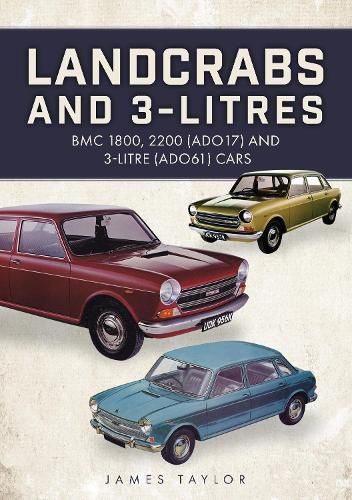Readings Newsletter
Become a Readings Member to make your shopping experience even easier.
Sign in or sign up for free!
You’re not far away from qualifying for FREE standard shipping within Australia
You’ve qualified for FREE standard shipping within Australia
The cart is loading…






Affectionately named the Landcrab, the BMC 1800 was the largest of three ranges designed by Sir Alec Issigonis in the late 1950s and early 1960s. As innovative in its own way, the 1800 followed the successful Mini and 1100 and was highly praised for its Hydrolastic suspension and the vast interior space made possible by front-wheel drive. This big family saloon also tasted success in motor sport, and went on to have six-cylinder derivatives, of which the earliest examples were developed in Australia for local sale.
Much of the 1800 design was re-employed for a new luxury model, the Austin 3-Litre, which had rear-wheel drive to suit its more conservative market. Sadly, less successful than the 1800, the 3-Litre promised much but never quite delivered - and the plans for rebadged versions, and even a Bentley derivative, were not pursued.
Both these cars had important places in the story of the British car industry in the 1960s, and both of them have a following among classic-car enthusiasts today.
Acclaimed motoring historian James Taylor details these vehicles in this highly informative and beautifully illustrated account.
$9.00 standard shipping within Australia
FREE standard shipping within Australia for orders over $100.00
Express & International shipping calculated at checkout
Affectionately named the Landcrab, the BMC 1800 was the largest of three ranges designed by Sir Alec Issigonis in the late 1950s and early 1960s. As innovative in its own way, the 1800 followed the successful Mini and 1100 and was highly praised for its Hydrolastic suspension and the vast interior space made possible by front-wheel drive. This big family saloon also tasted success in motor sport, and went on to have six-cylinder derivatives, of which the earliest examples were developed in Australia for local sale.
Much of the 1800 design was re-employed for a new luxury model, the Austin 3-Litre, which had rear-wheel drive to suit its more conservative market. Sadly, less successful than the 1800, the 3-Litre promised much but never quite delivered - and the plans for rebadged versions, and even a Bentley derivative, were not pursued.
Both these cars had important places in the story of the British car industry in the 1960s, and both of them have a following among classic-car enthusiasts today.
Acclaimed motoring historian James Taylor details these vehicles in this highly informative and beautifully illustrated account.